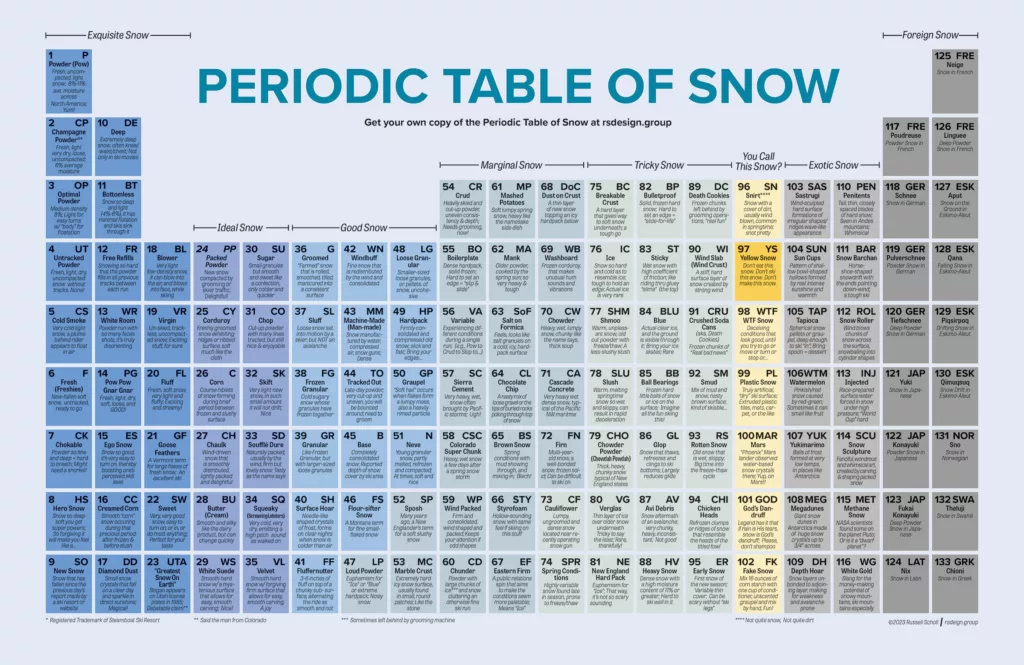When Russ Scholl (B.S., ’76) started teaching ski school more than 40 years ago, he carried an unconventional piece of equipment on the slopes.
“I always had a notebook in the pocket of my ski school parka,” he says. “I kept hearing strange terms for snow conditions, and I wanted to keep a record of them.”
His diligent record-keeping came in handy when the pandemic hit and ski areas shut down in 2020. Scholl was in Breckenridge, where he spends every winter, and while he couldn’t teach or even go skiing, he still had fun with the sport. He dug out his notebook and designed a “Periodic Table of Snow,” which maps out 133 slang phrases and words for types of snow and ski conditions.
“We have all these wacky terms for snow, like ‘creamed corn,’ ‘death cookies,’ and ‘cold smoke,’ that run the gamut from exquisite conditions to marginal and tricky snow,” he says. “I wanted to find a catchy way to display the different types of snow and the periodic table [of the elements] was a perfect fit.”
Scholl had a strong foundation for the project, thanks to more than six decades decades of skiing. Scholl first put on a pair of wooden skis and leather boots in 1959, when he was 5 years old and hasn’t missed a winter since. He skied 83 days last season – and has set a personal record of 109 days in a single season.
Scholl is originally from New Hampshire, where he’s skied plenty of bulletproof ice, and it’s not an accident that he chose to study outdoor recreation in what is now the Warner College of Natural Resources at CSU, which is known for being near plenty of good skiing.

Get your own copy of the Periodic Table of Snow at rsdesign.group
From bulletproof to free refills
Since he’s worked (and played) at ski resorts all over the country, Scholl has heard, and skied, the gamut of snow conditions, from “bulletproof” ice in the Northeast to “free refills” in Utah – a heavy snowfall that fills tracks back in and gifts skiers and riders with endless powder turns. (Those happen to be Scholl’s least favorite and most preferred conditions to ski, respectively.)
Scholl knew he needed to supplement his own knowledge of various snow conditions with research into regional snow slang. He confirmed each word or phrase through at least three sources to make sure it was widely used and not just something thrown around over an après beer.
When his wife saw a draft of the table, she said, “I’d still prefer if you used some of your free time to help with the dishes, but that’s pretty clever; you’d better get a copyright for it.”
Scholl did exactly that. He partnered with a graphic designer to make it look as sharp as a ski edge and launched a small business called RS Design. The concept resonated with skiers, and he’s sold prints from Hawaii to Alaska. Scholl partnered with the Warren Miller Ski Film Tour in 2021 and displayed his design at 17 tour stops around Colorado. It’s also been used in classrooms, from elementary schools to colleges, including in an actual chemistry class in New York, by a professor who also teaches skiing at Whiteface Mountain.
“Skiers and snowboarders take one look at it and they immediately get it,” he says.